Embed presentation
Downloaded 17 times
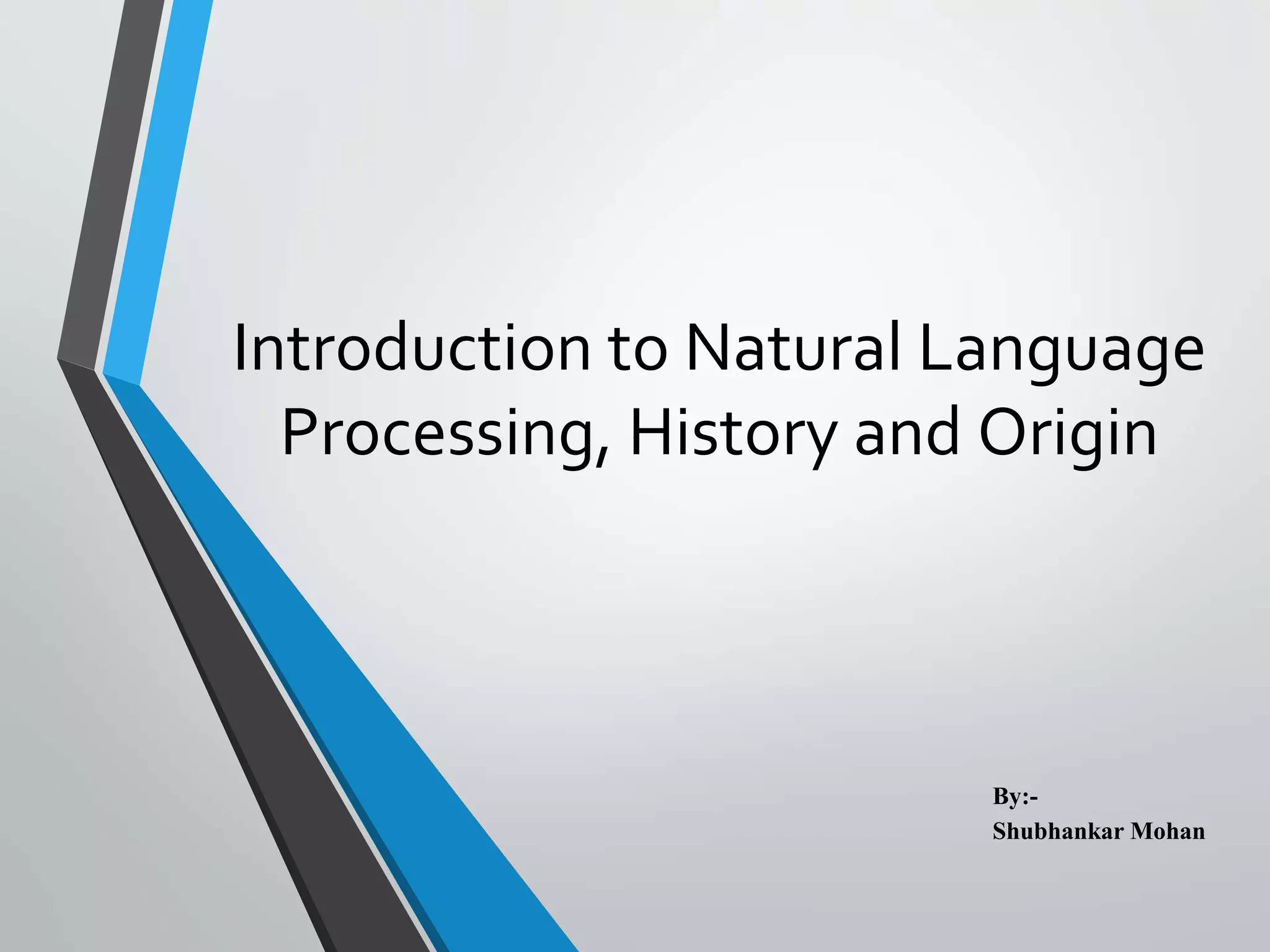
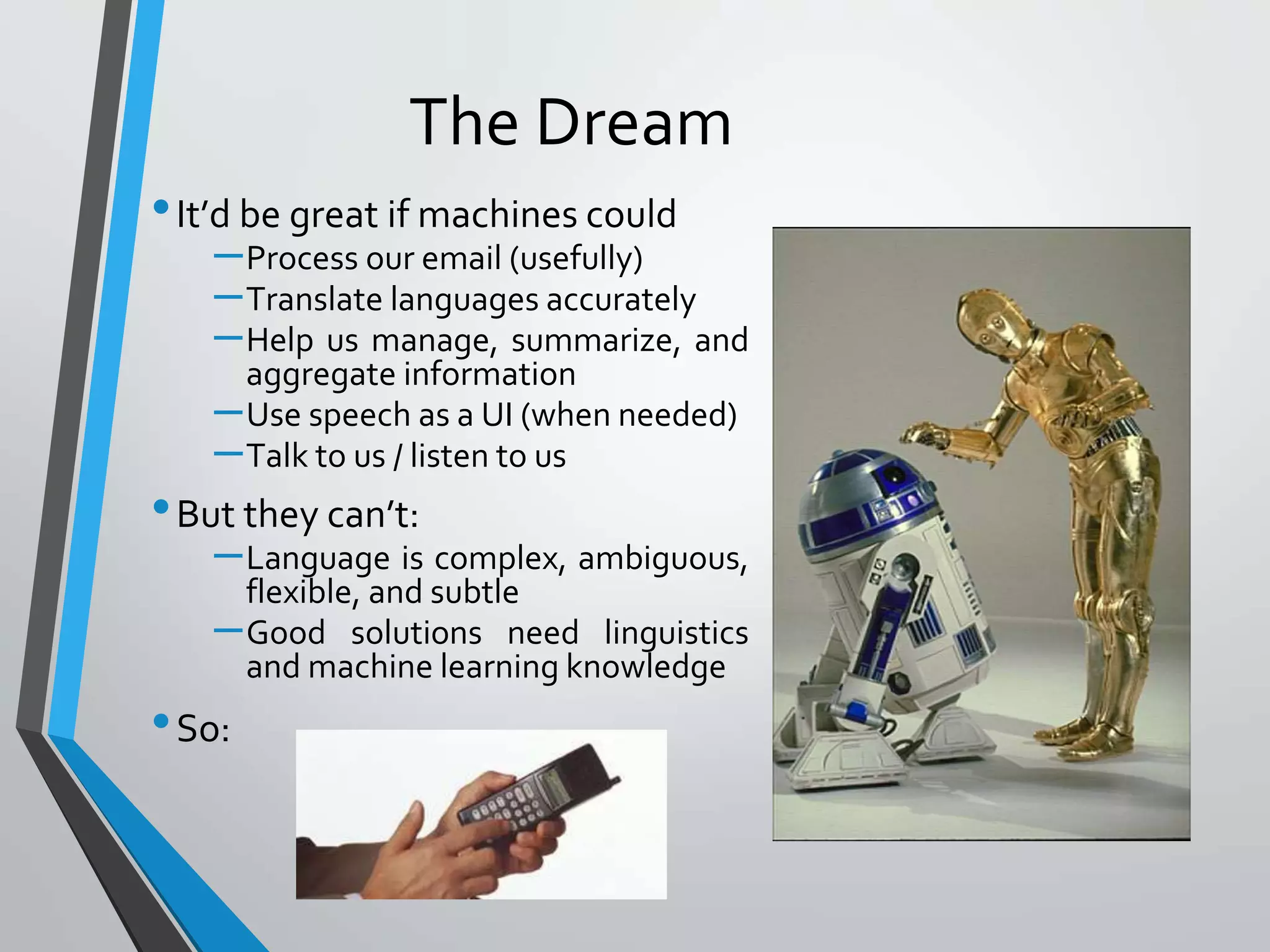
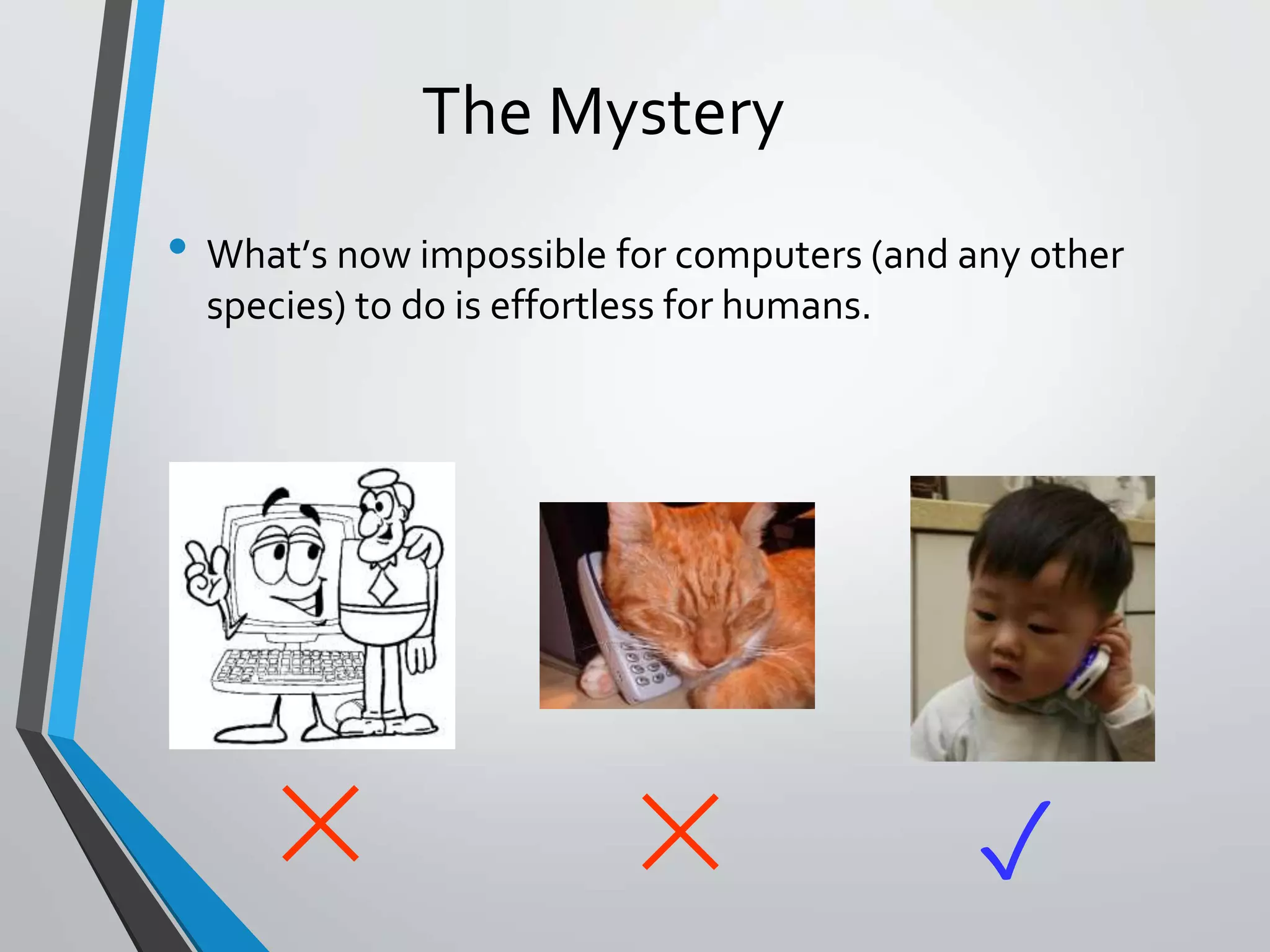
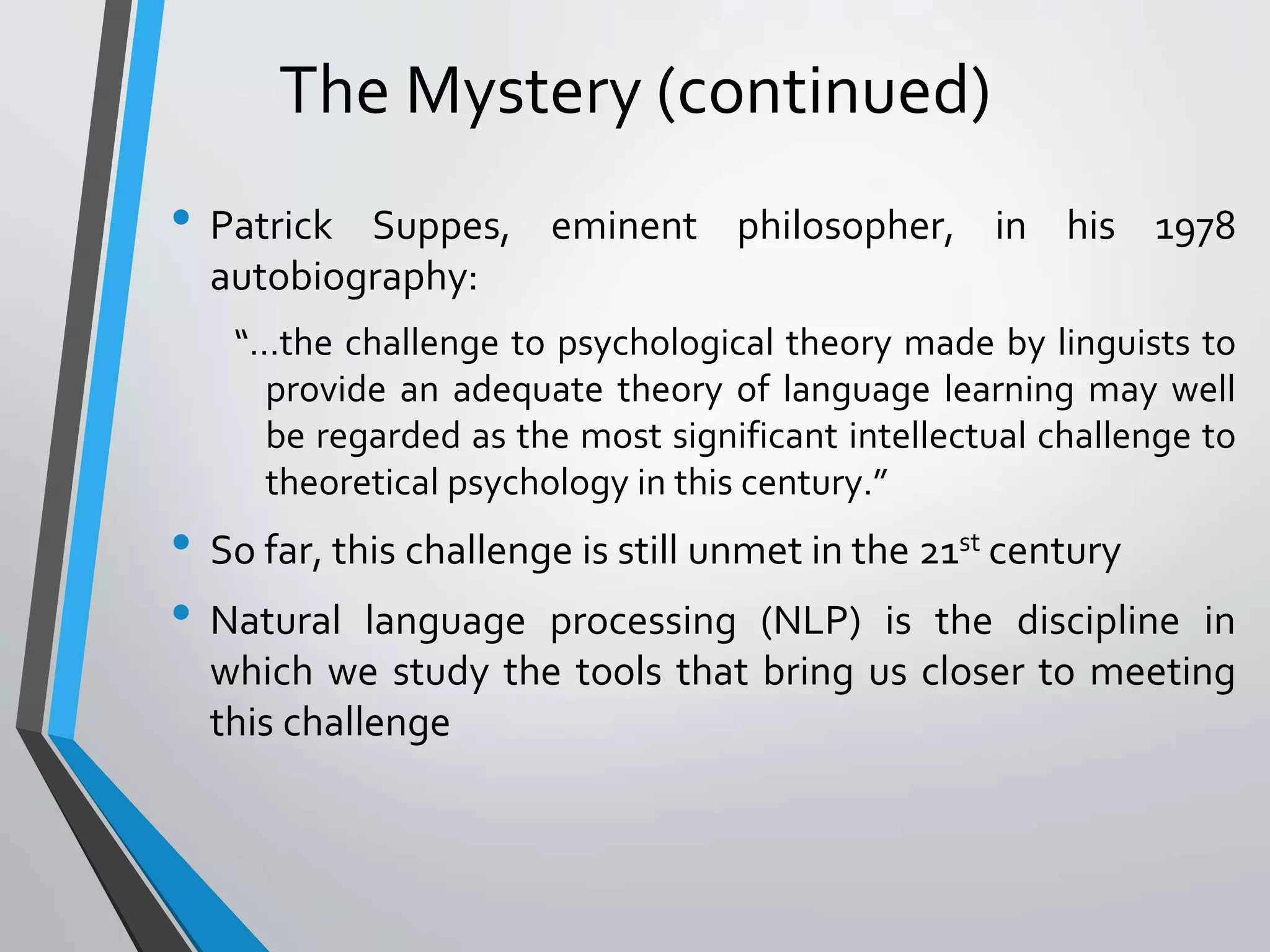
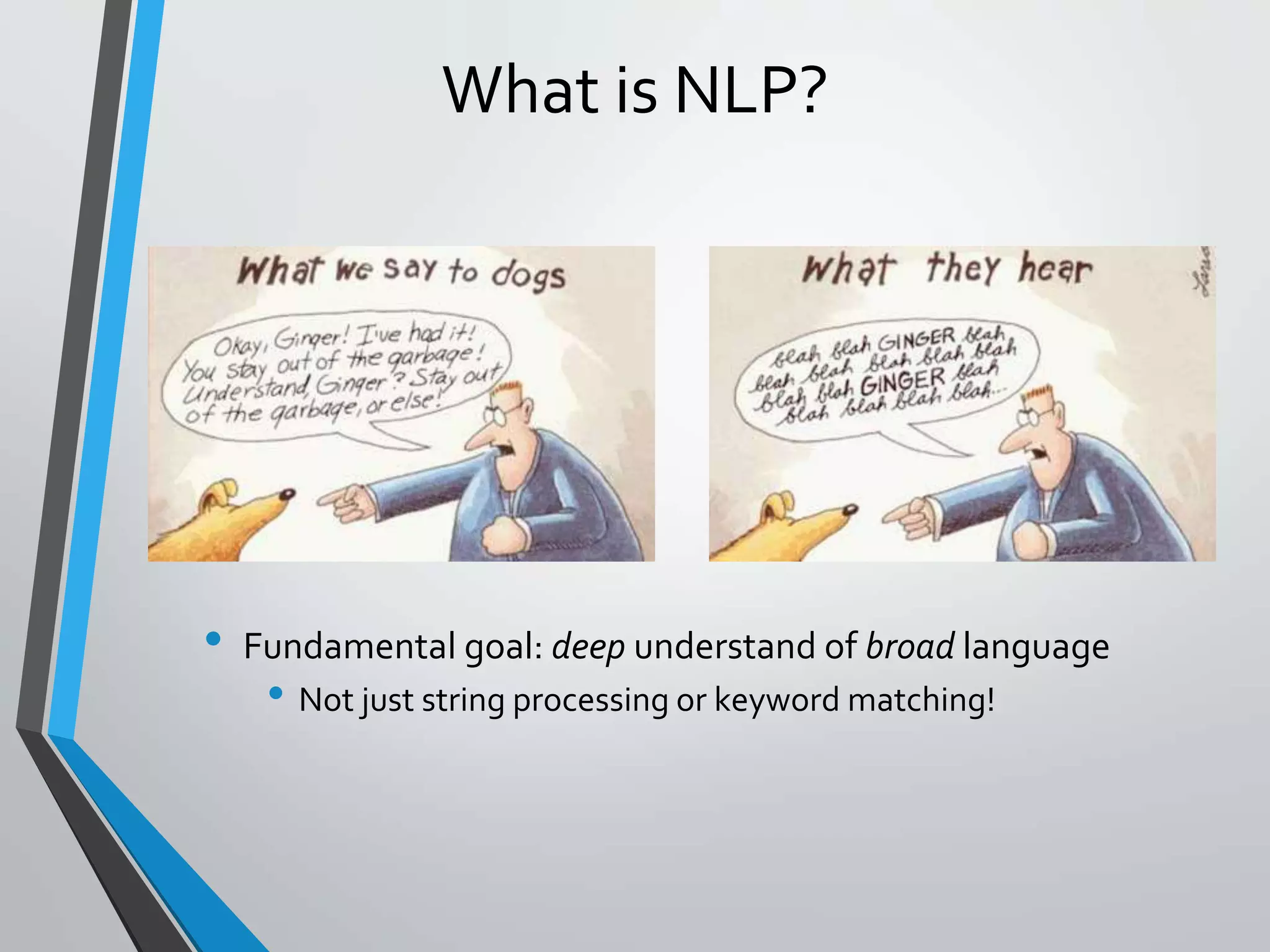
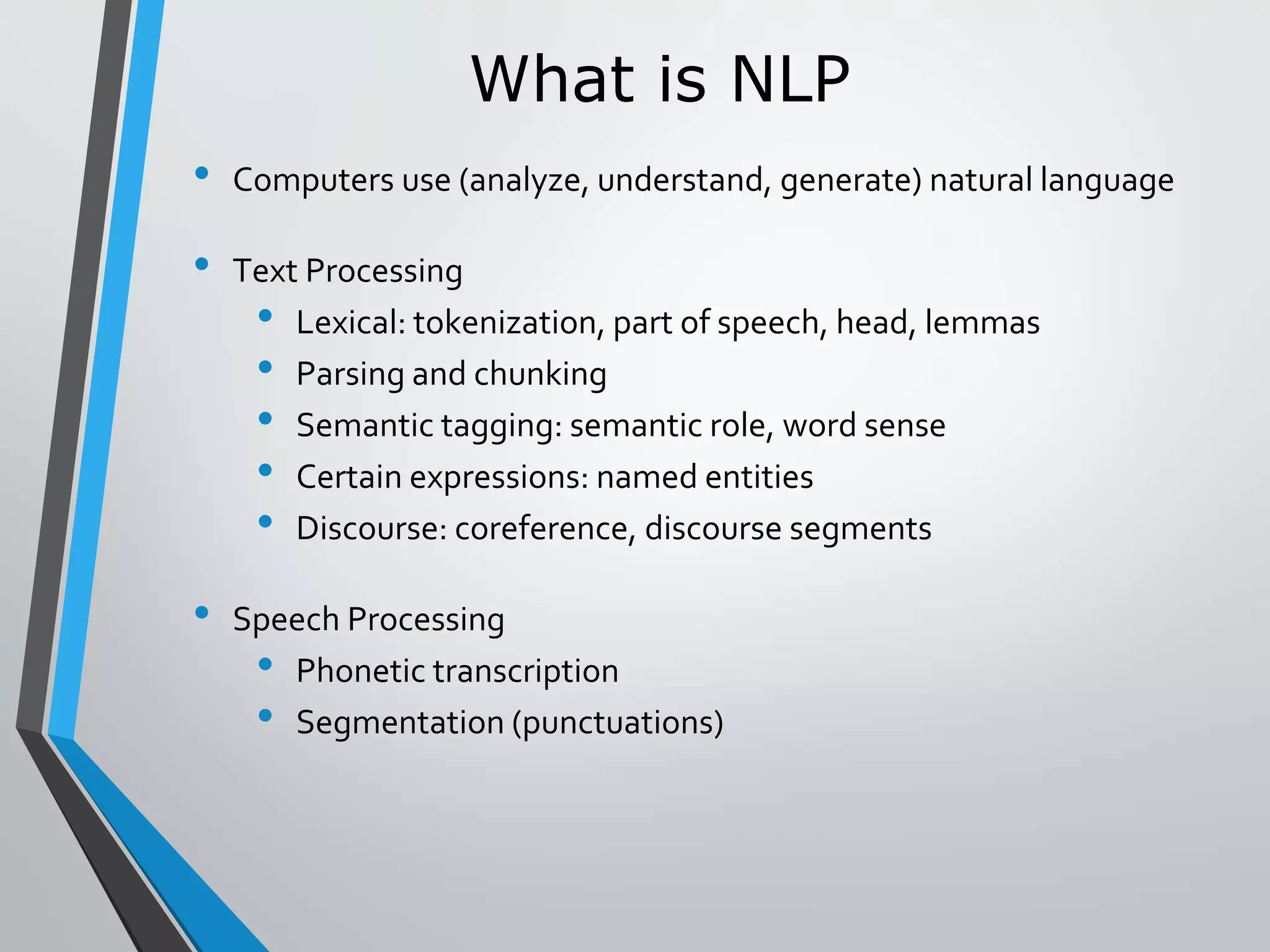
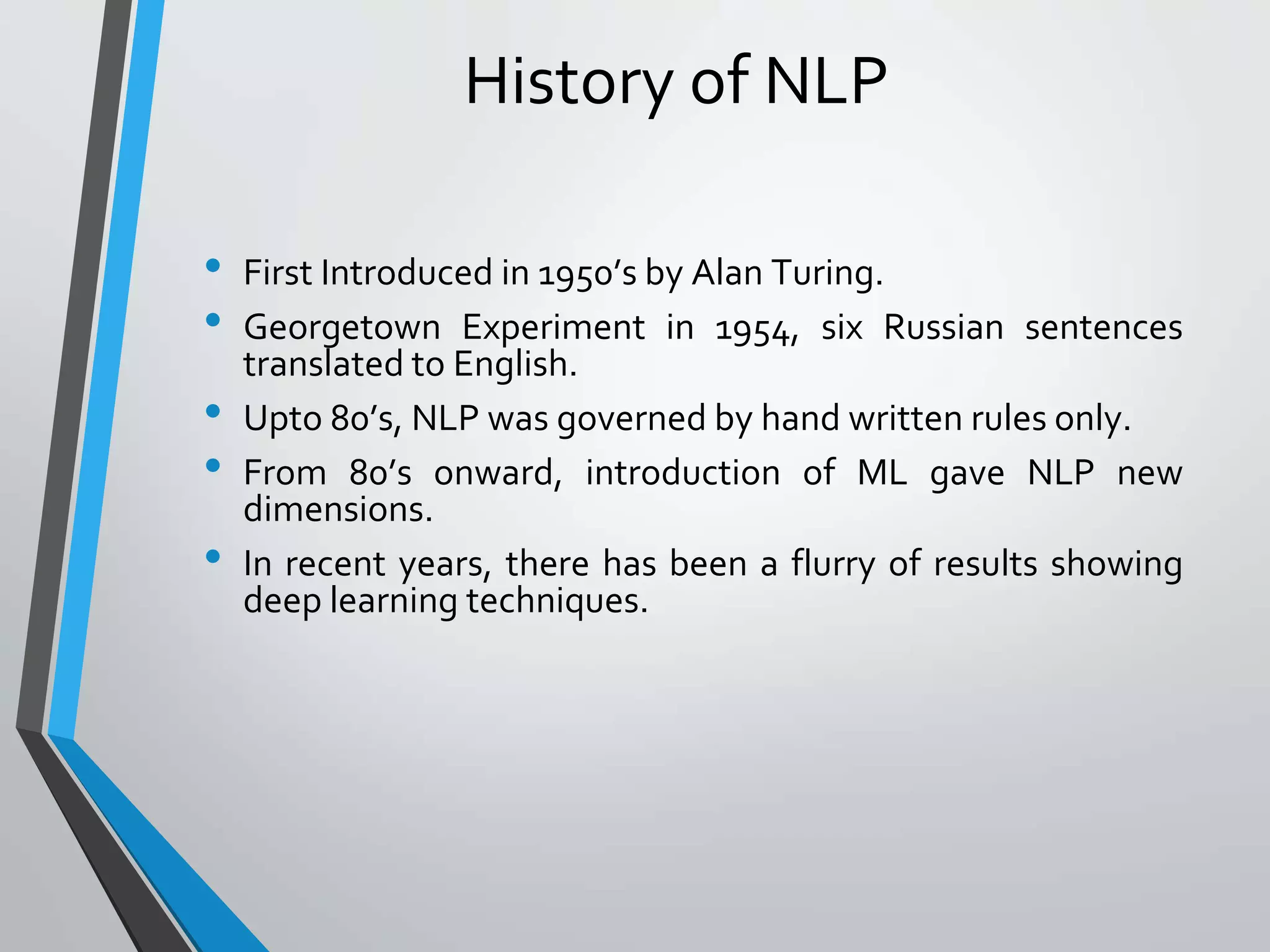
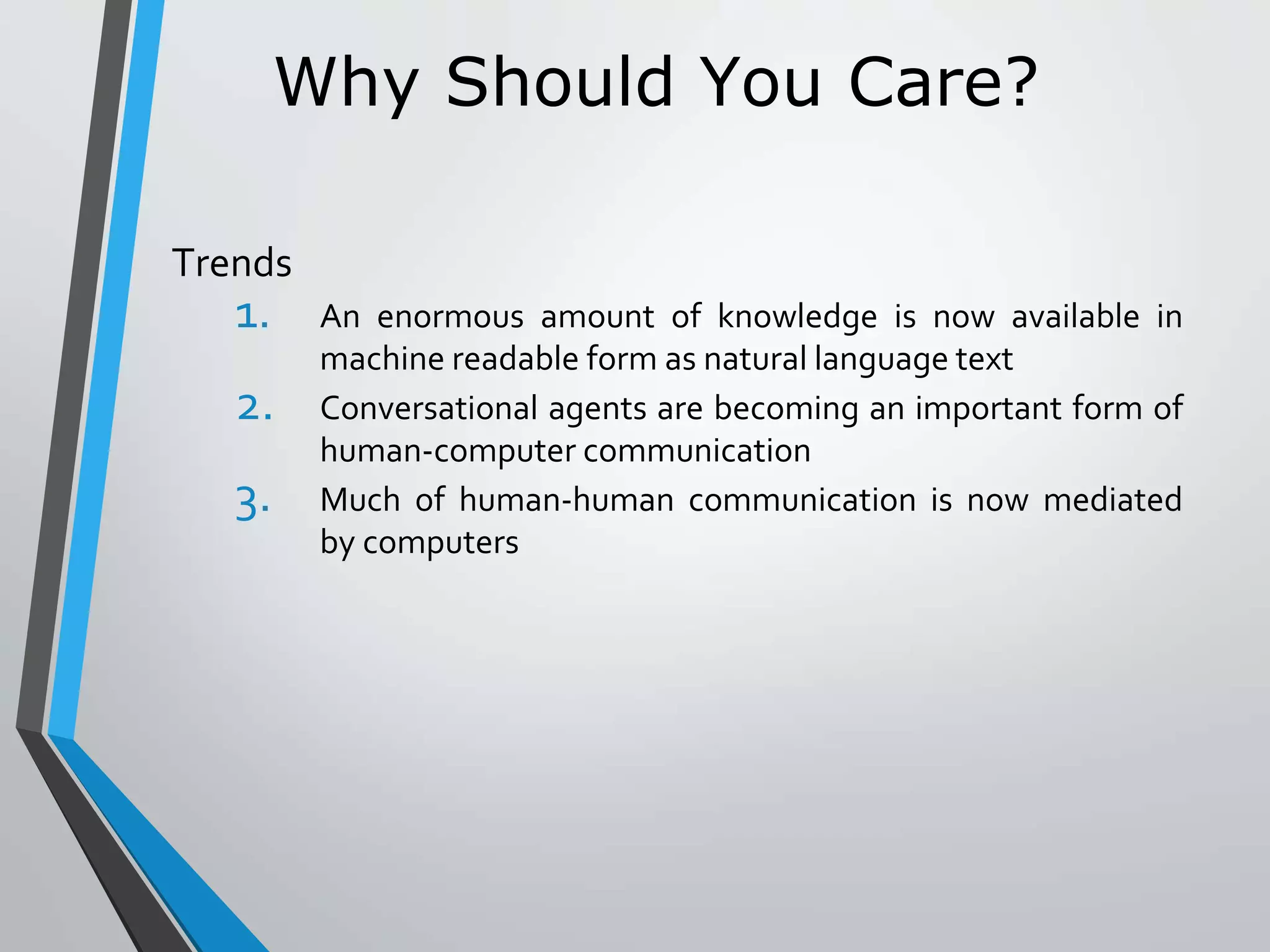
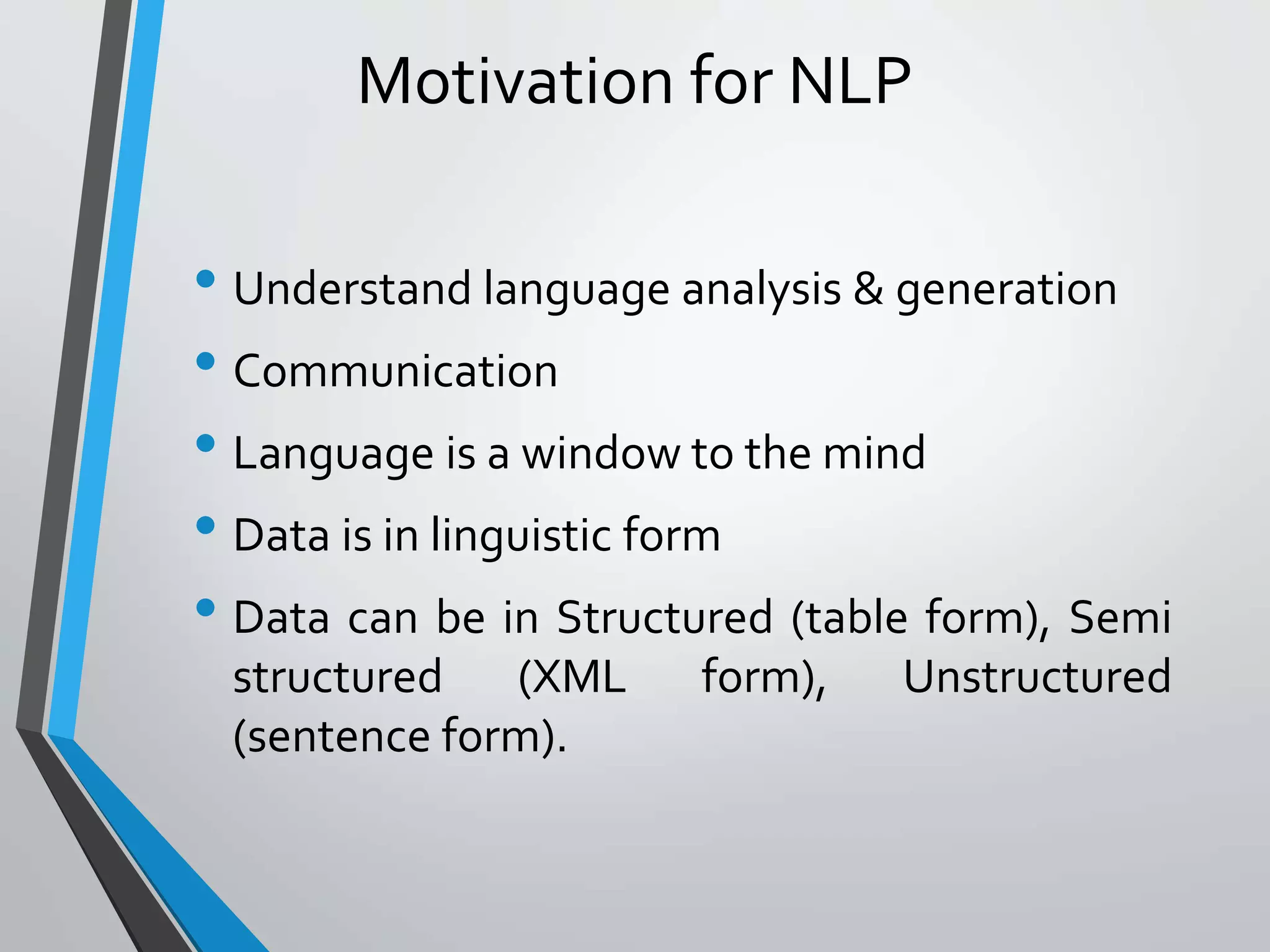
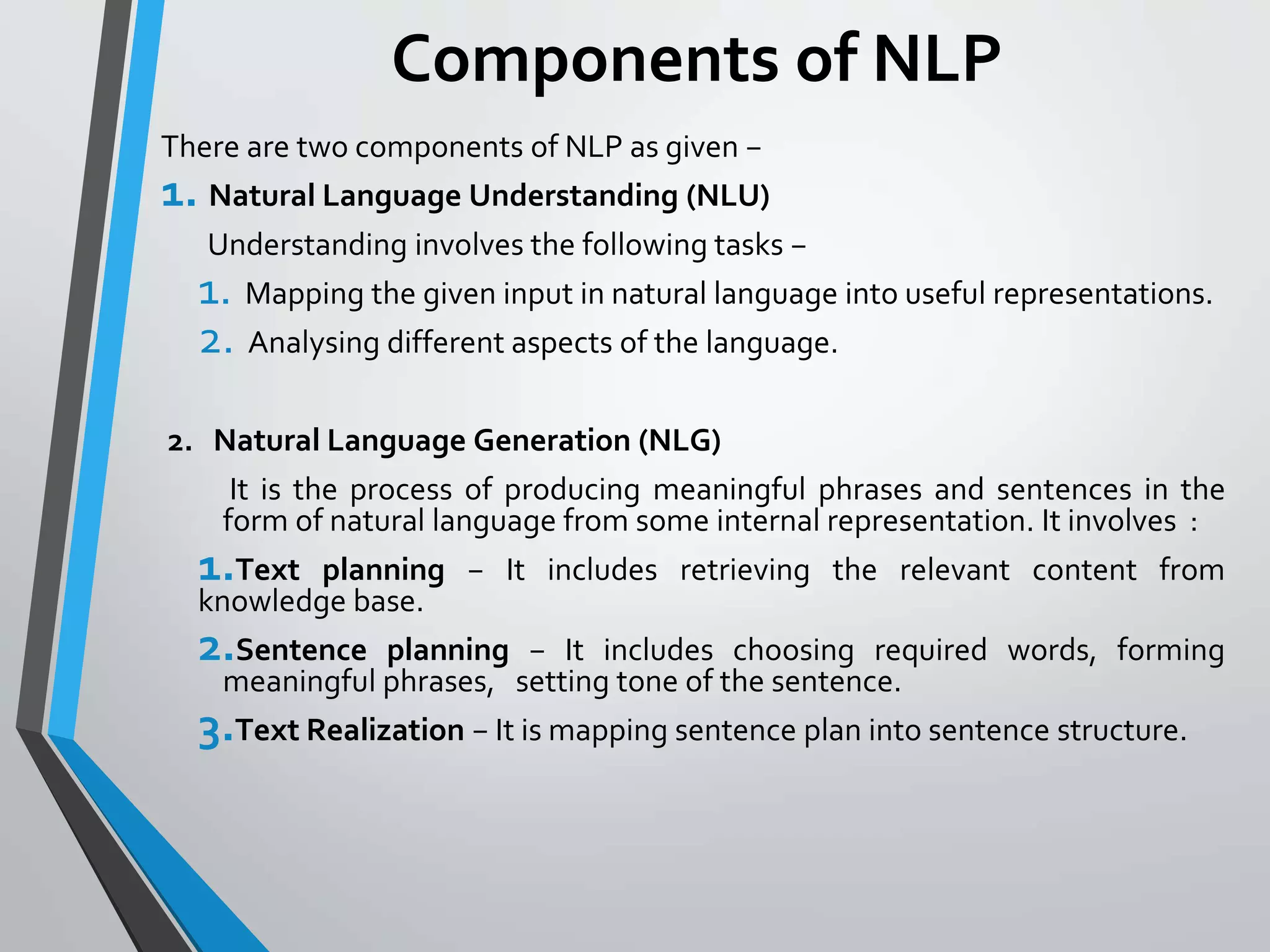
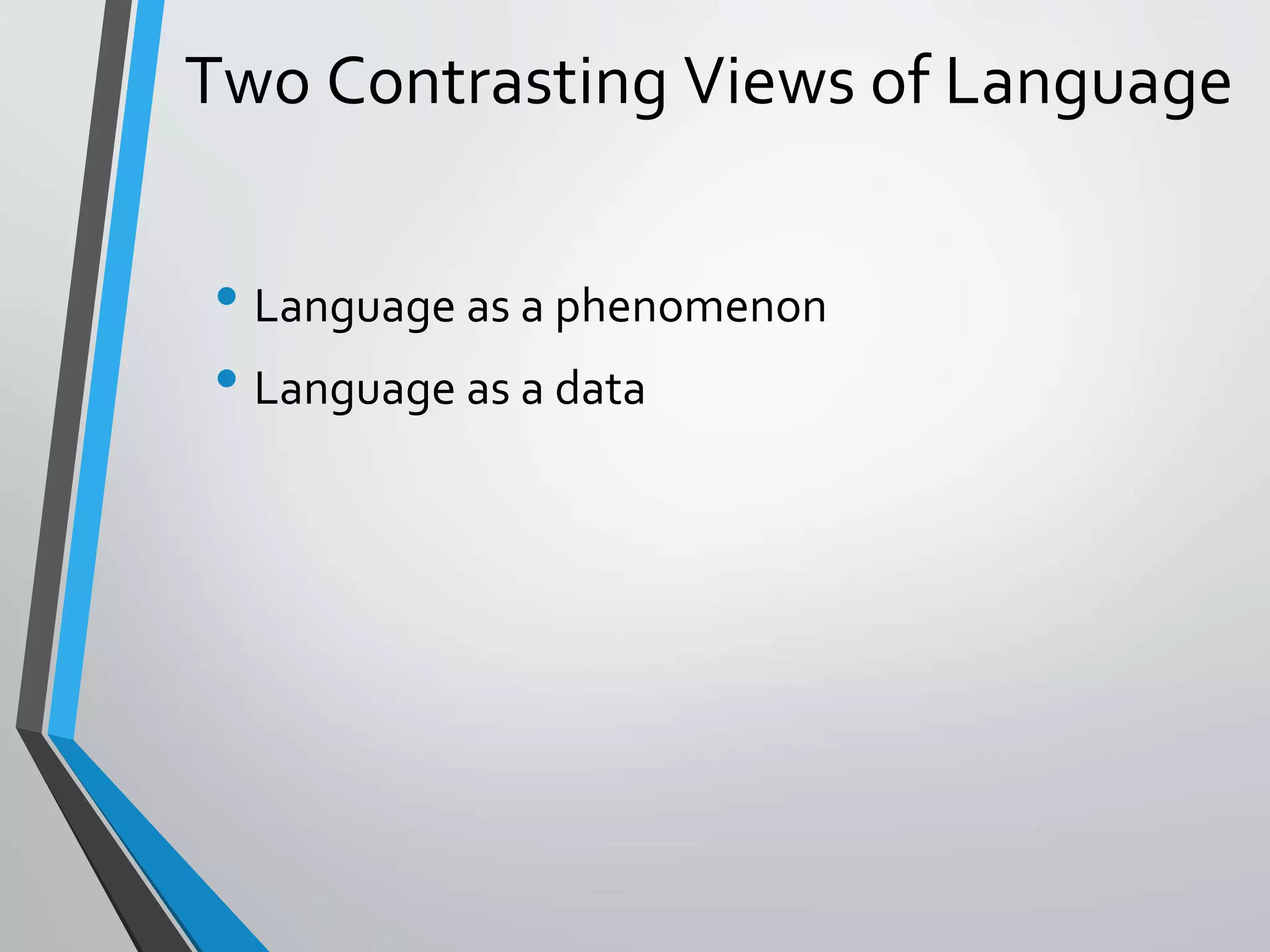
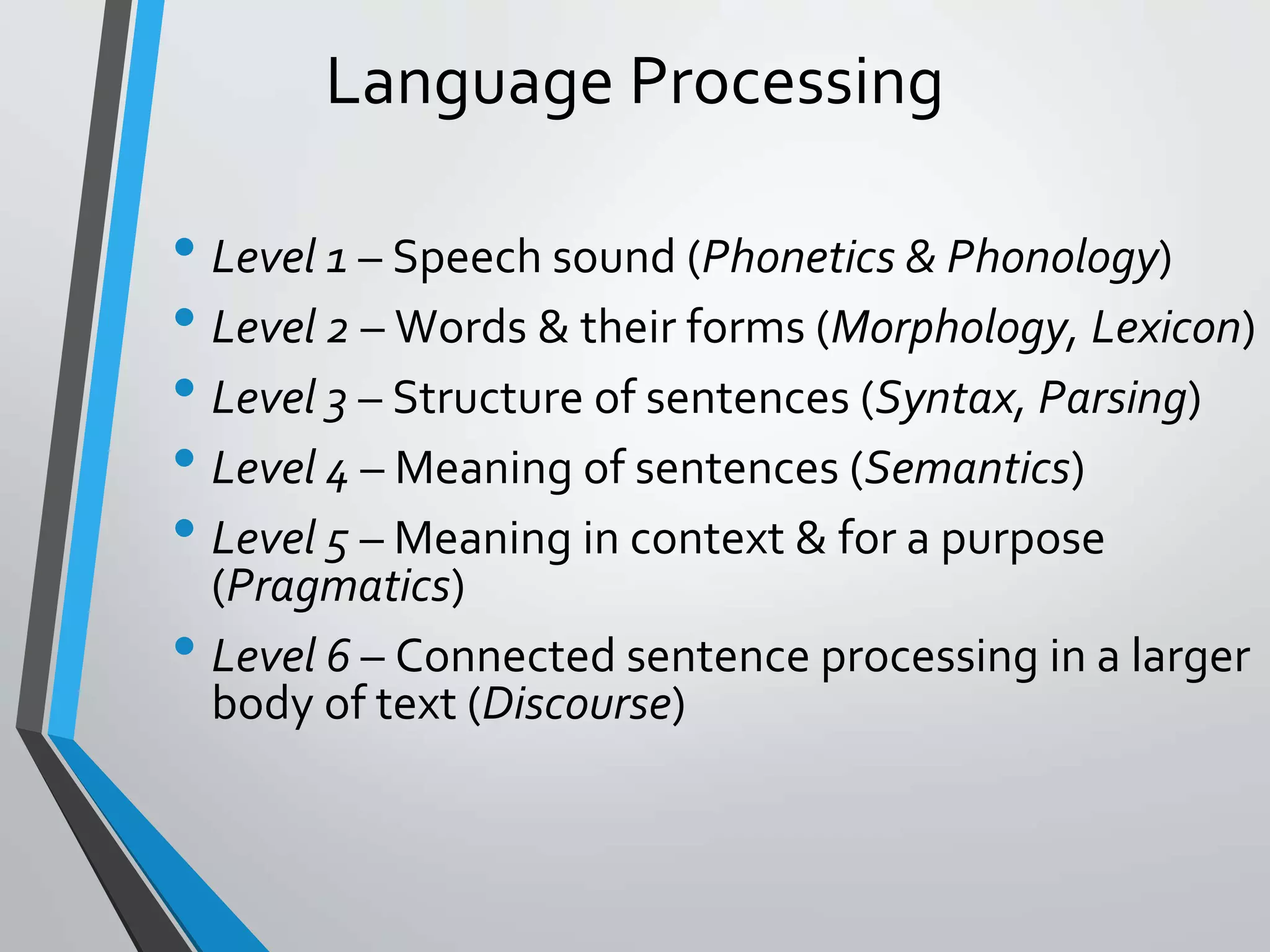

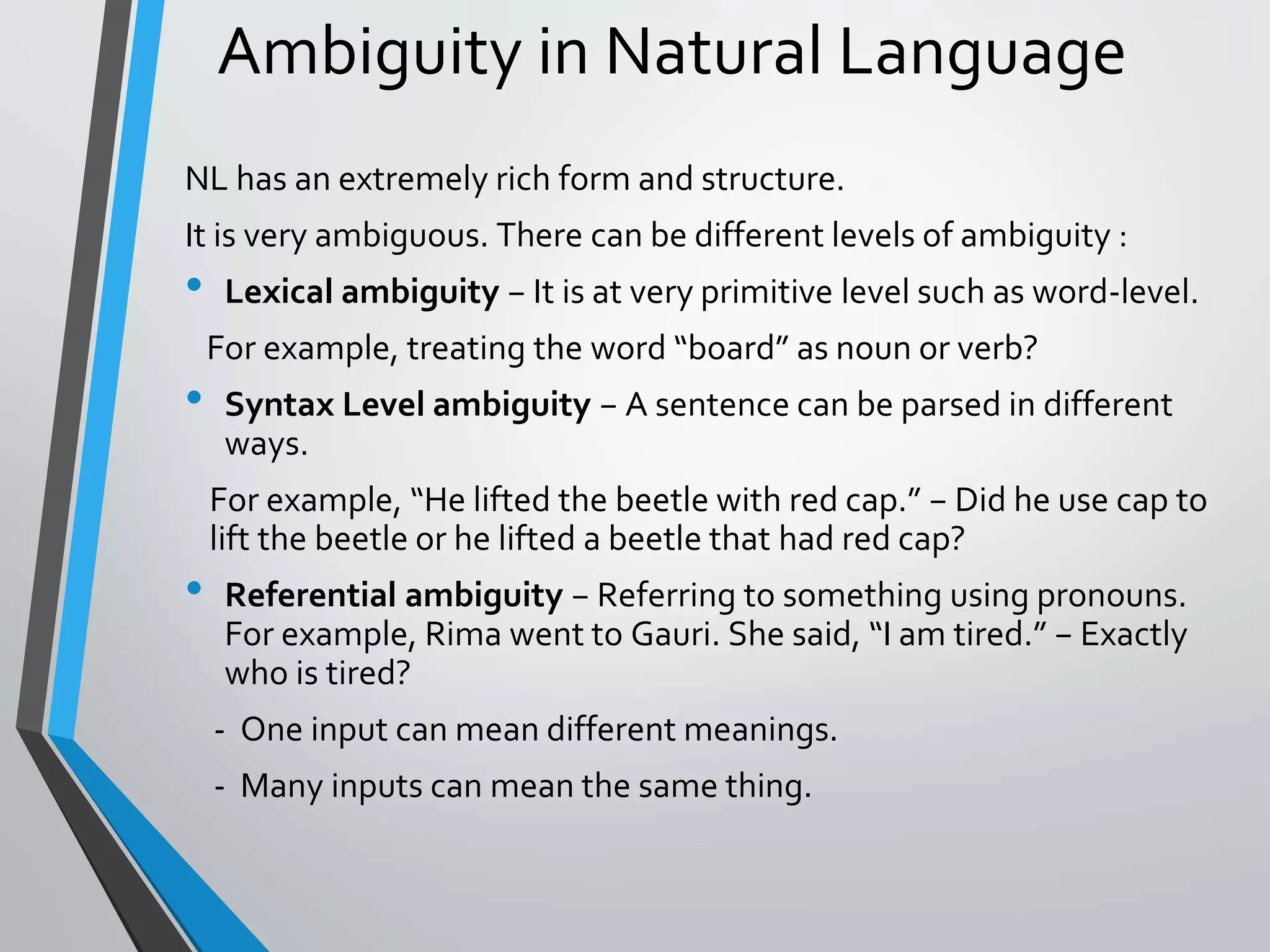


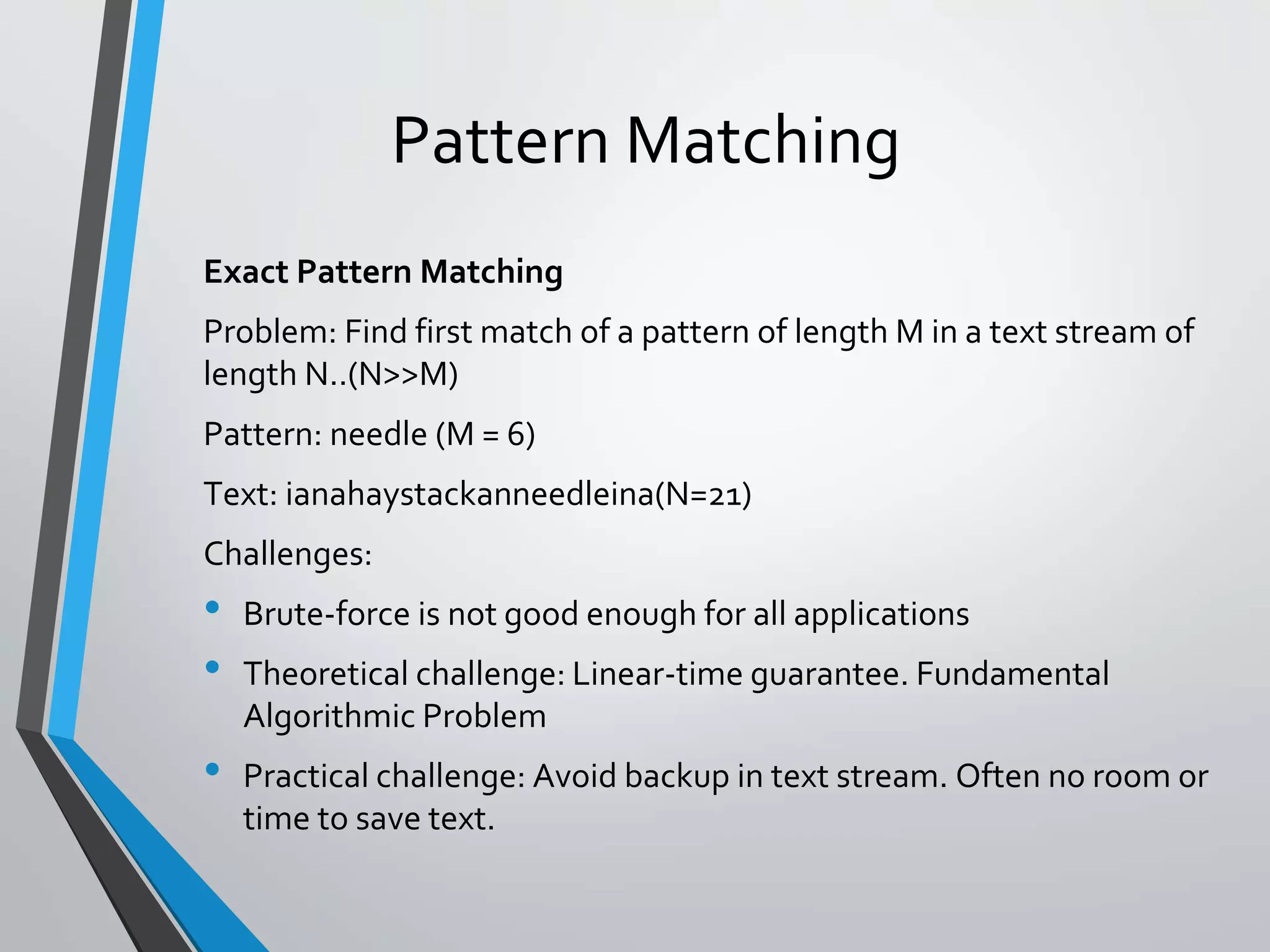
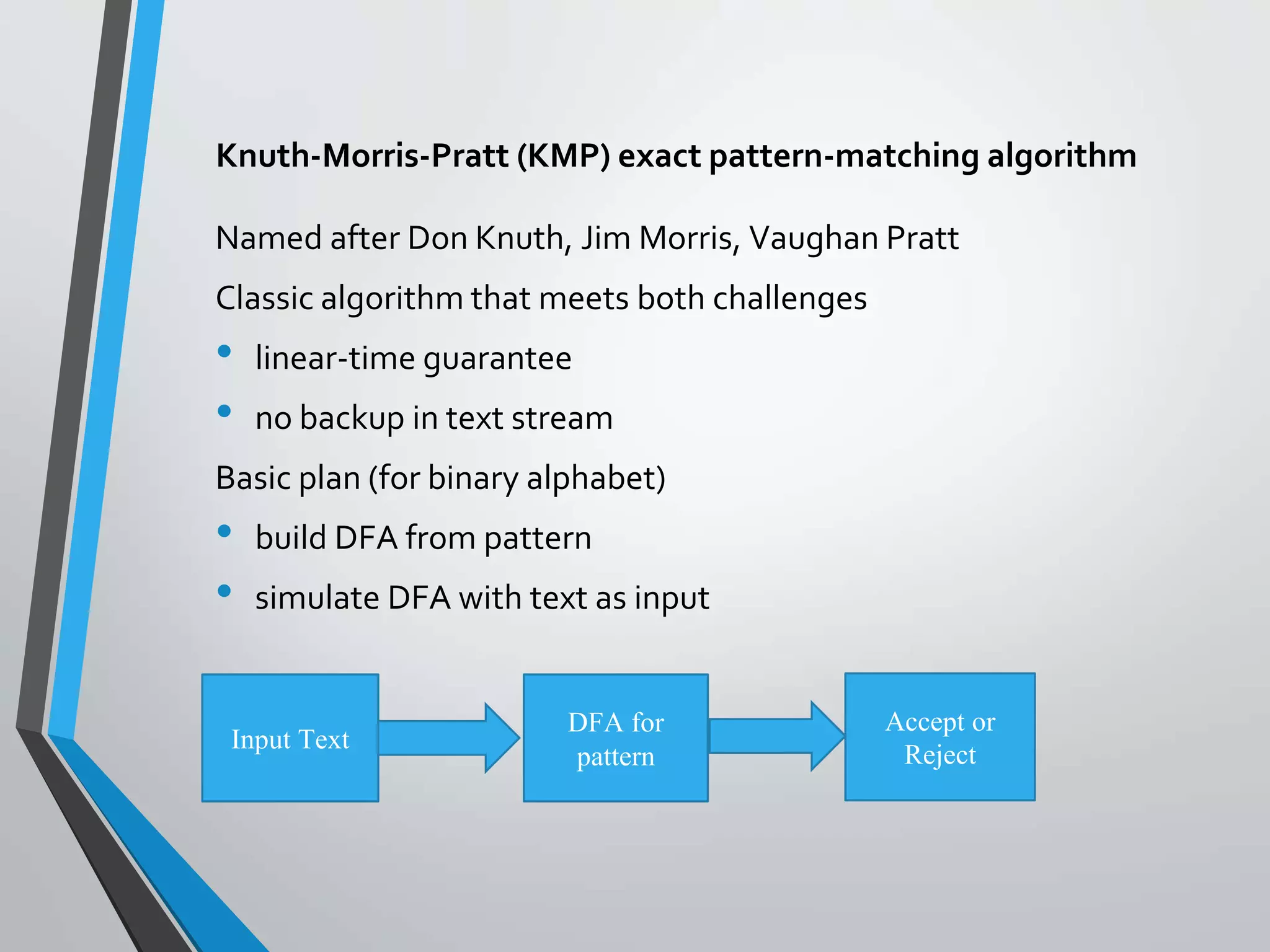
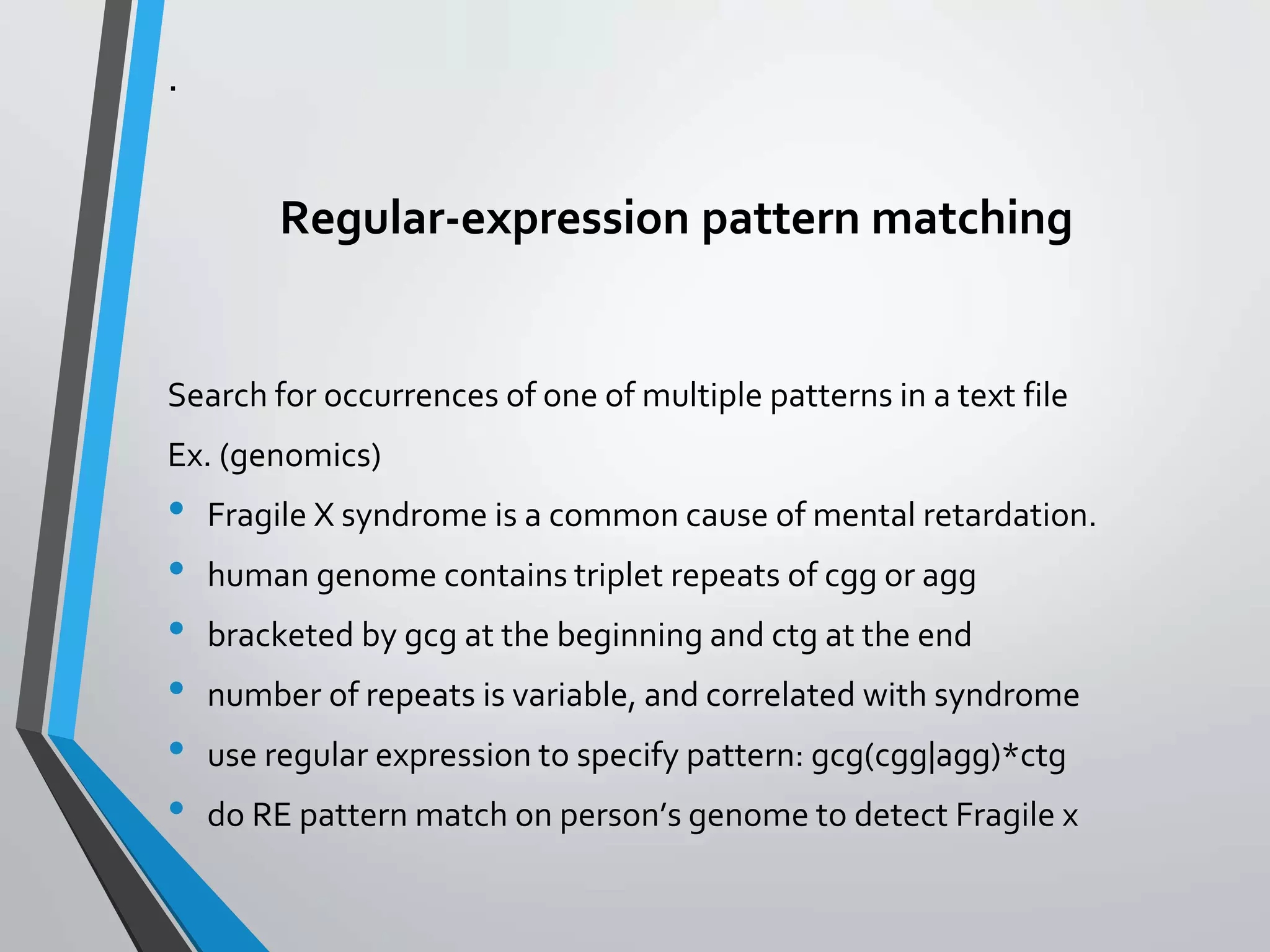
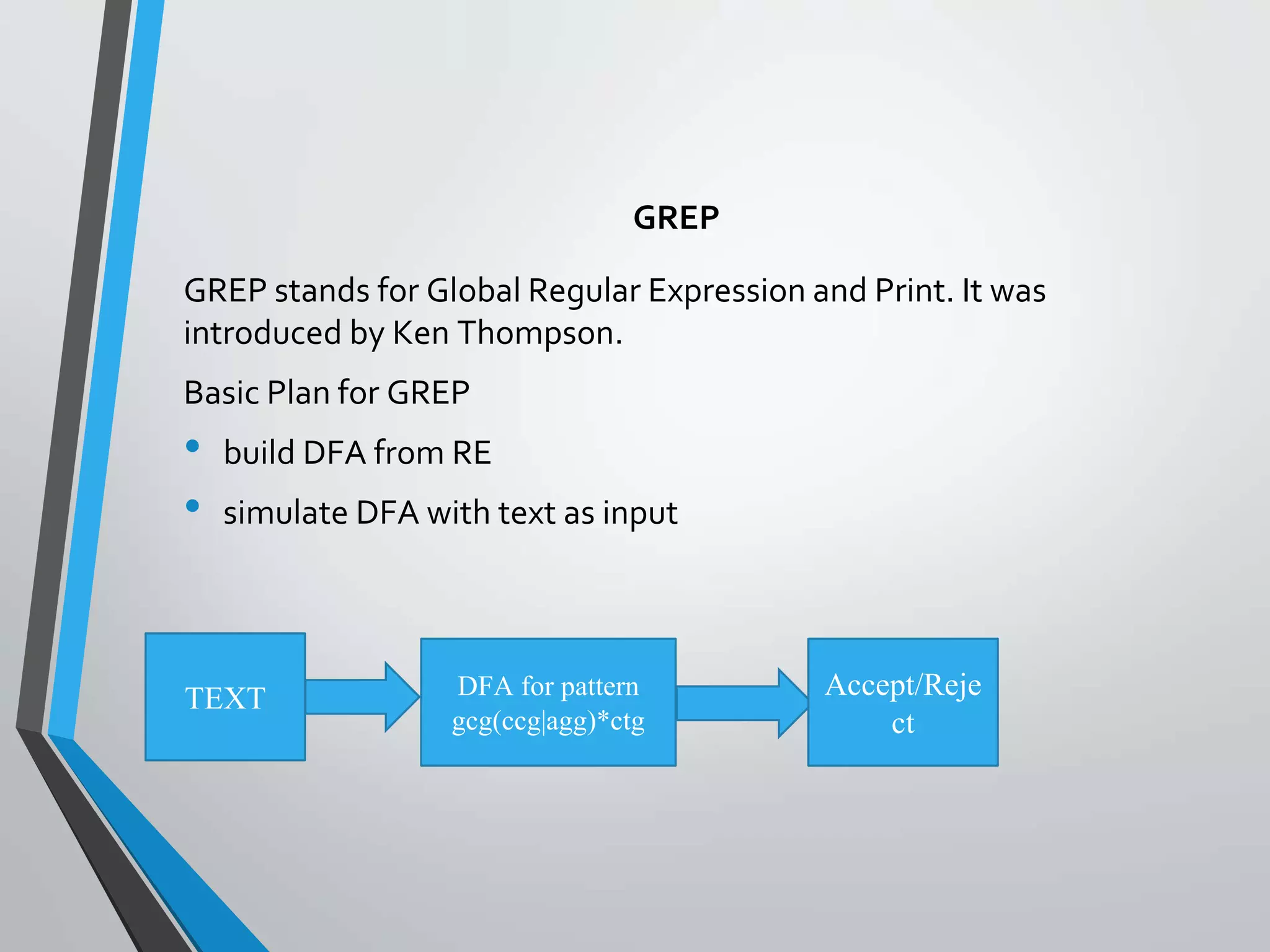
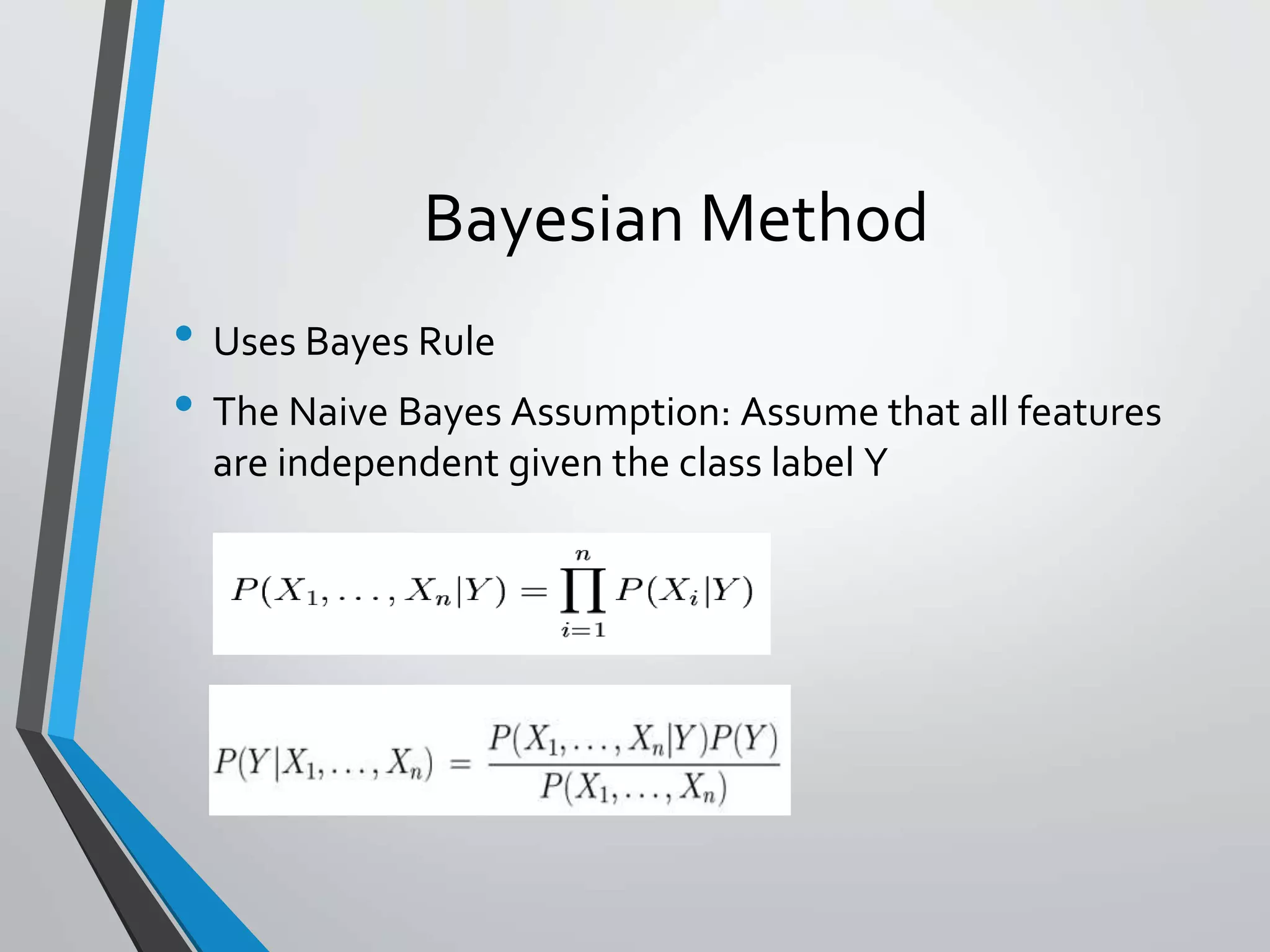
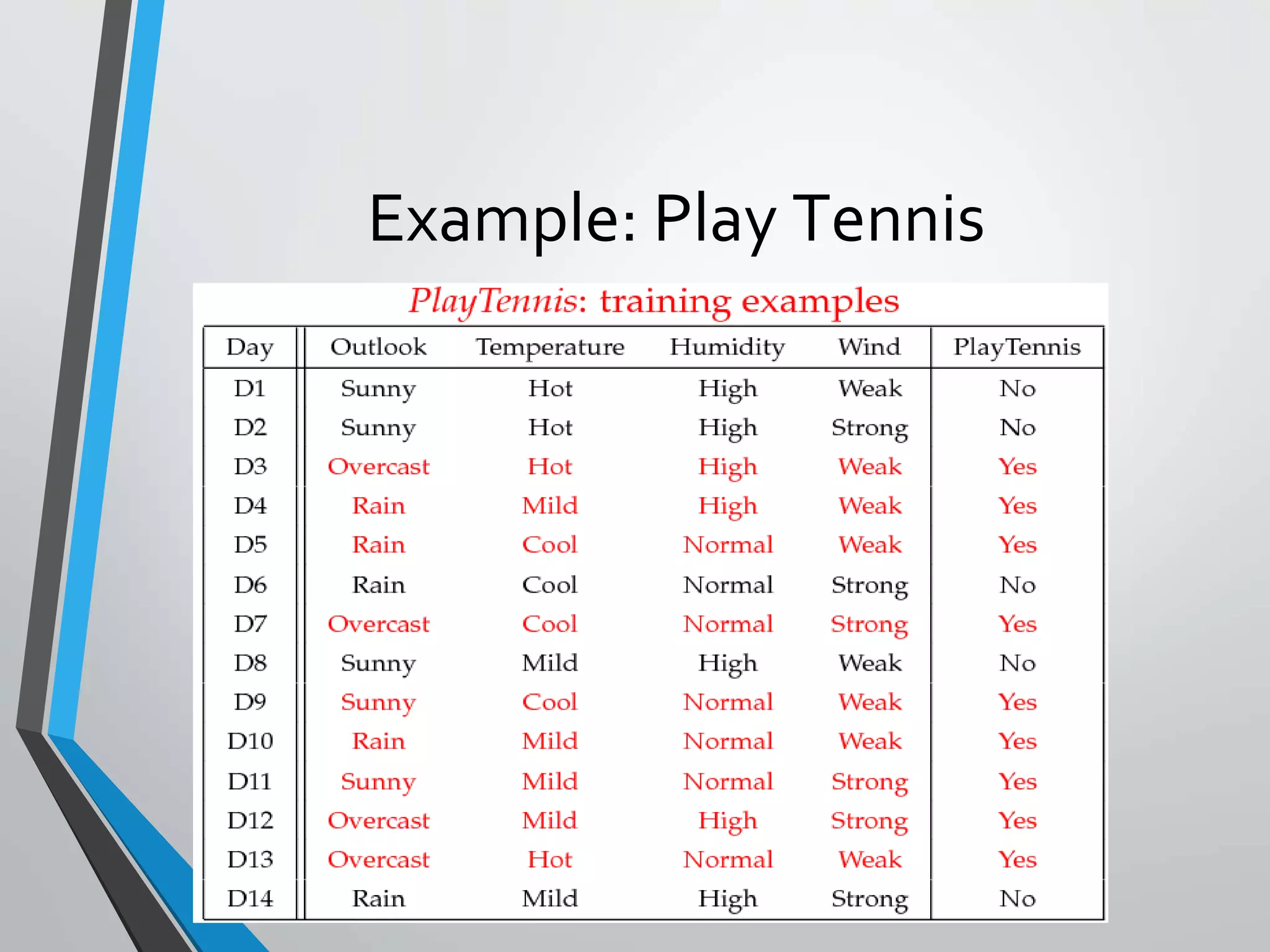
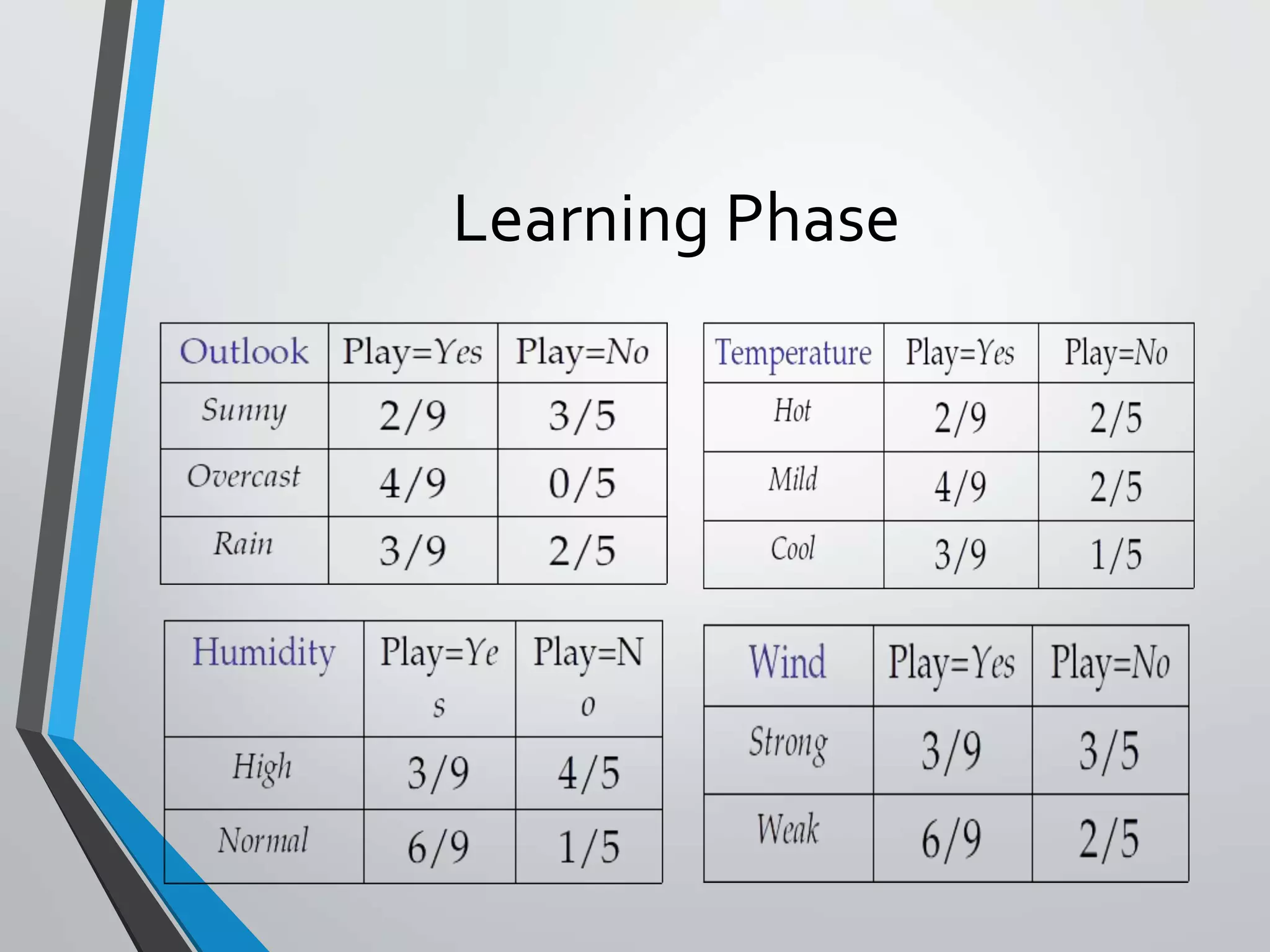
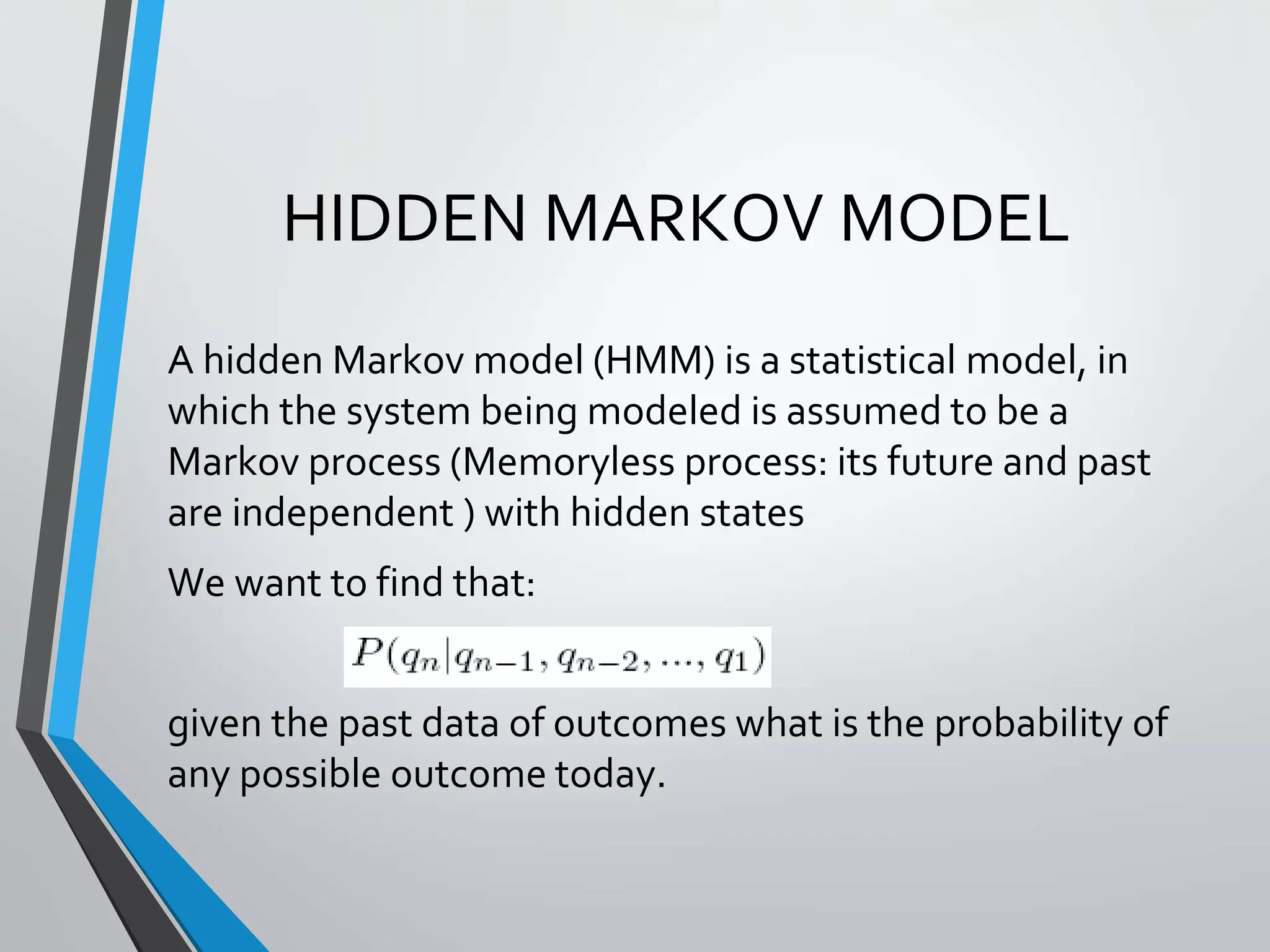
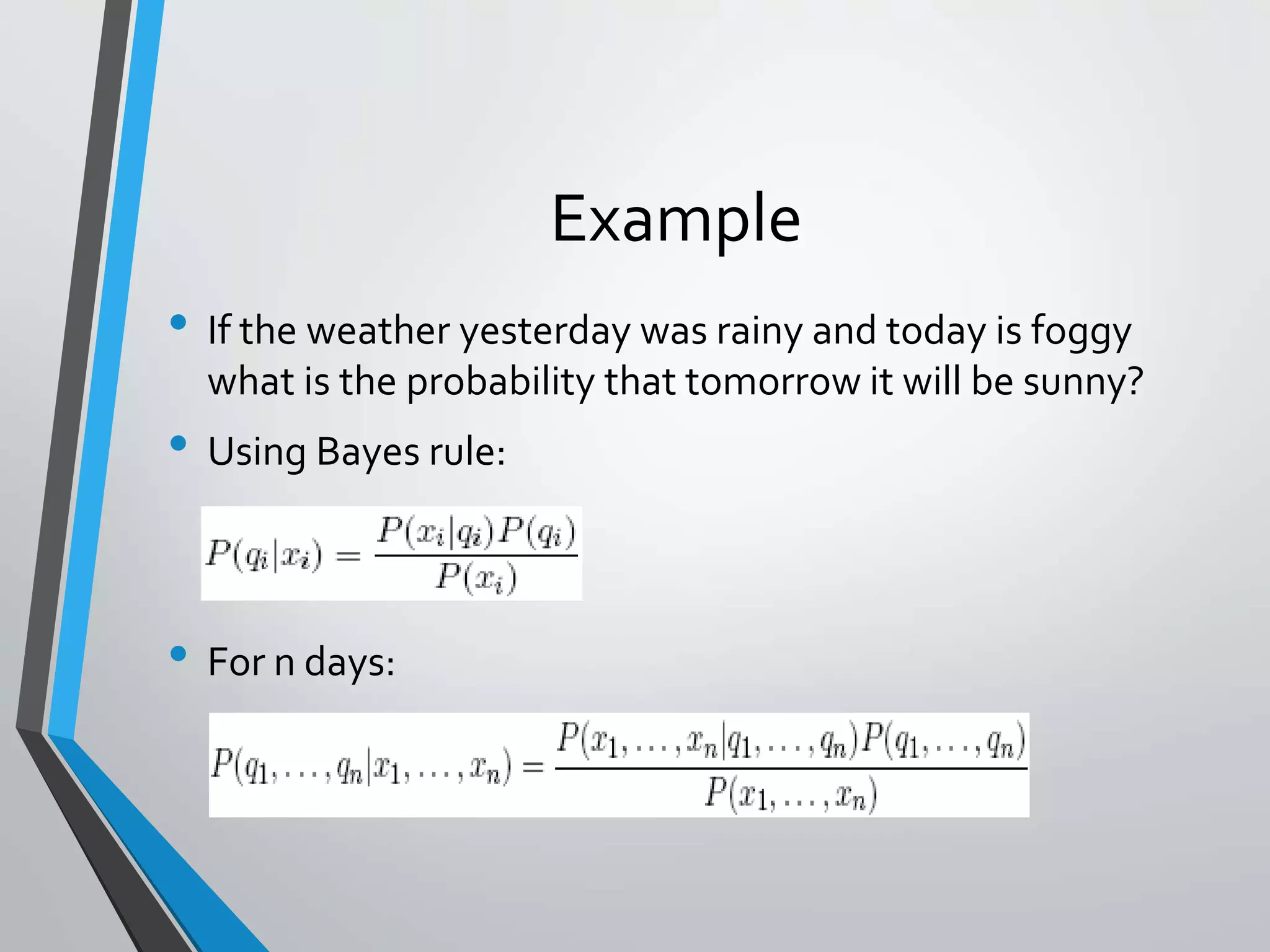

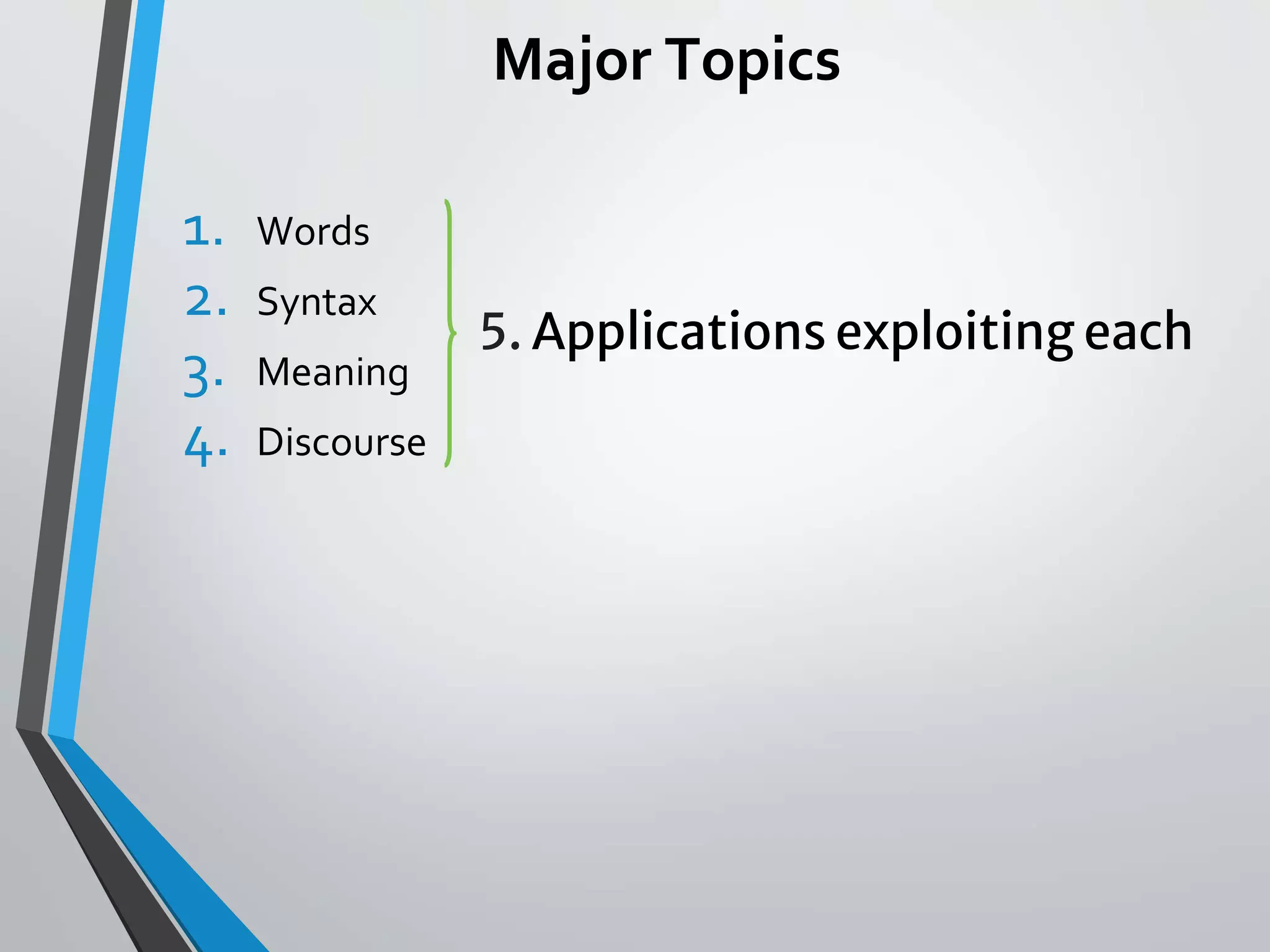
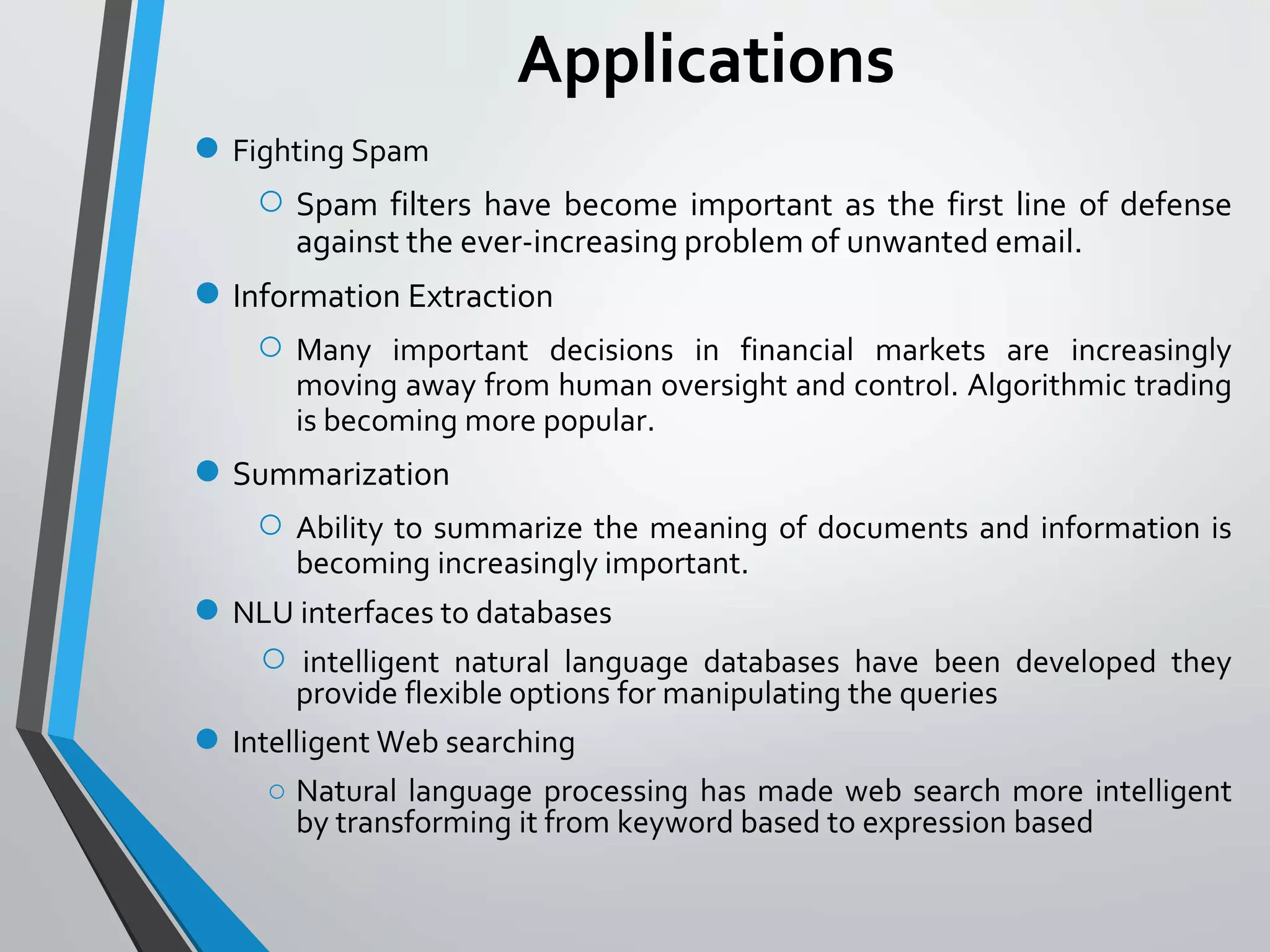
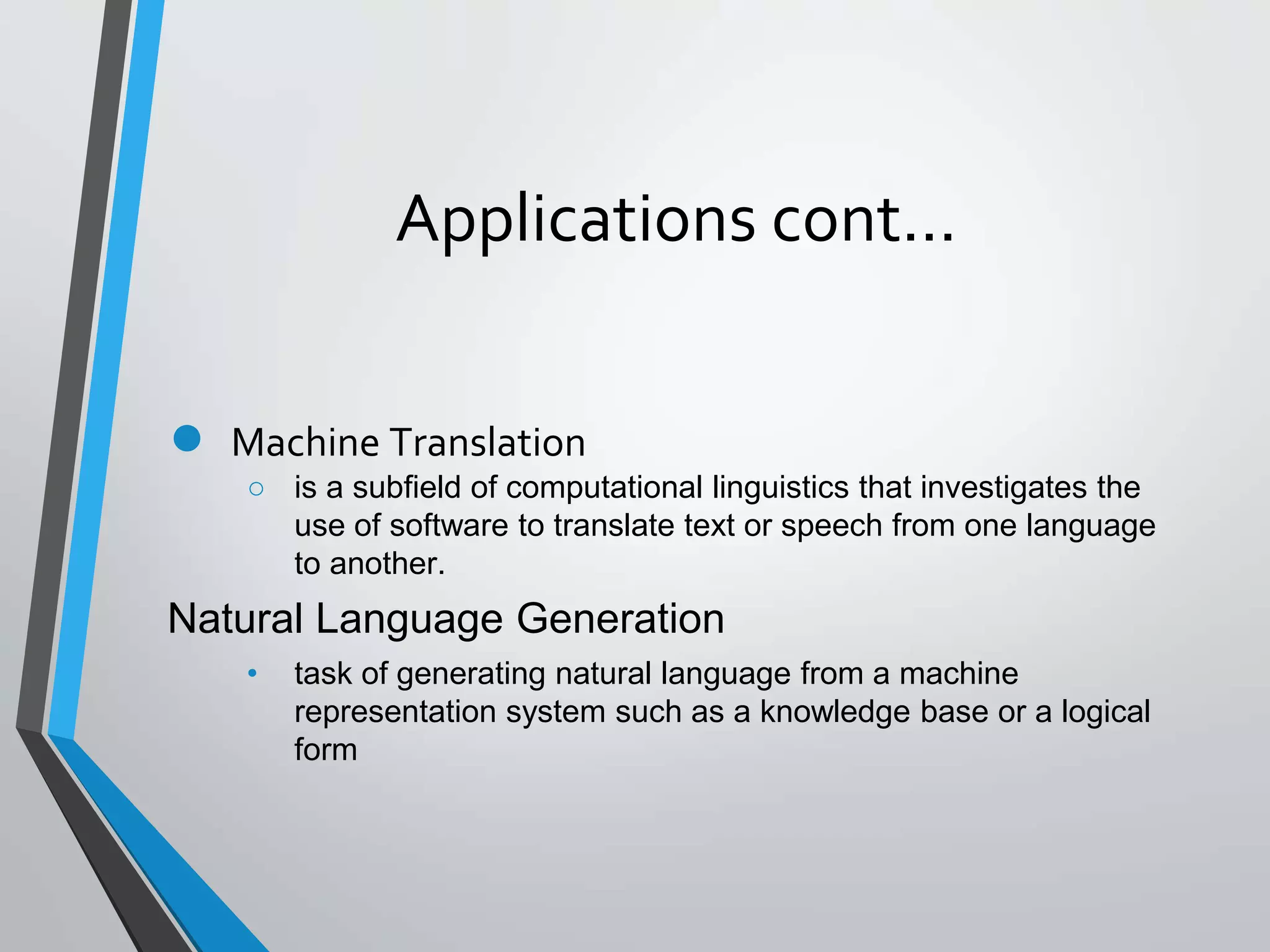
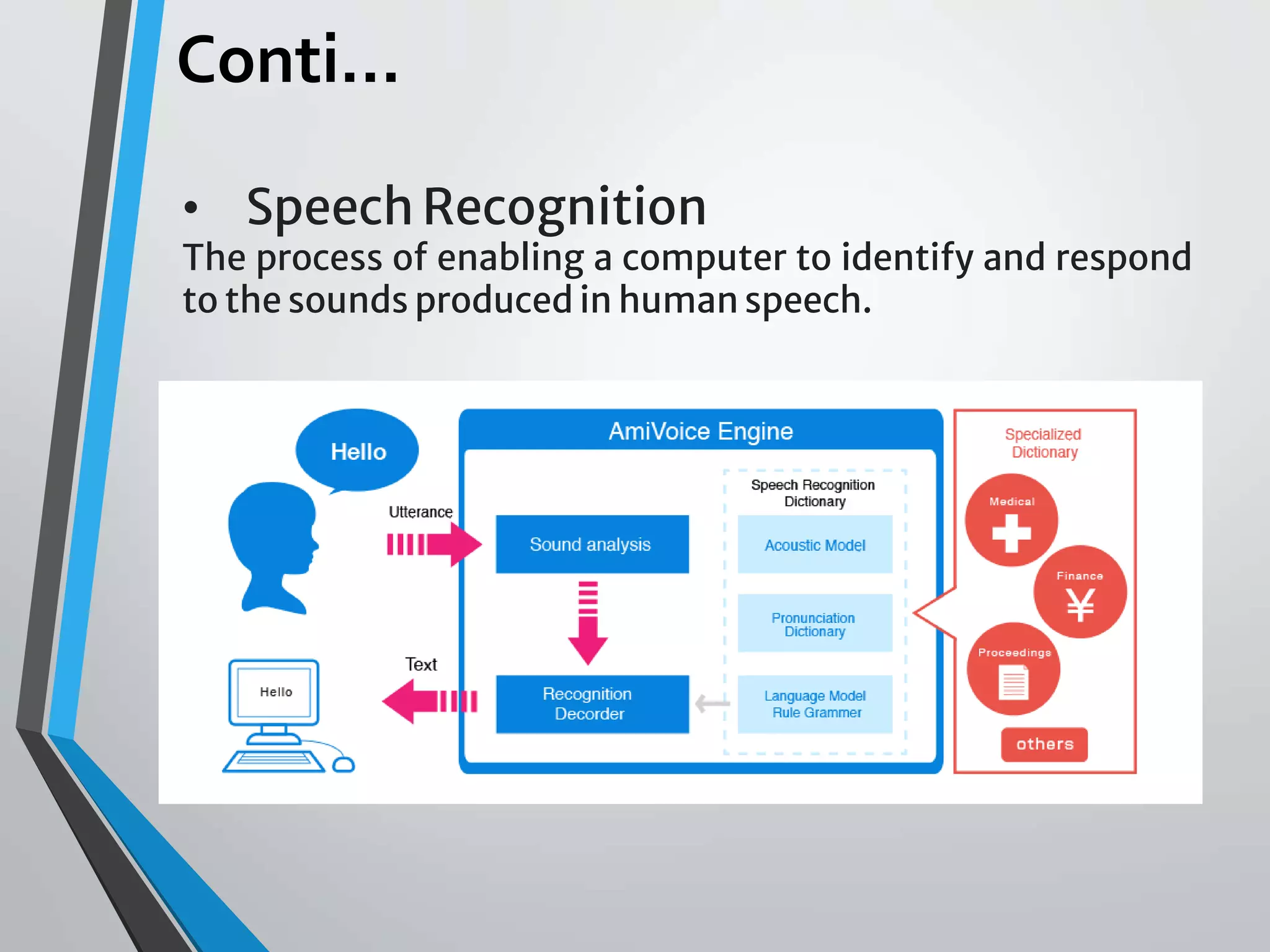

This document provides an introduction to natural language processing, including its history, goals, challenges, and applications. It discusses how NLP aims to help machines process human language like translation, summarization, and question answering. While language is complex, NLP uses techniques from linguistics, machine learning, and computer science to develop tools that analyze, understand, and generate human language.































Introduction to NLP, its history, and the challenges in understanding human language.
Definition, goals, and key components of NLP, including understanding and generation.
Different levels of language processing: phonetics, morphology, syntax, semantics, pragmatics, discourse.
Steps in NLP, including syntactic, semantic, and pragmatic analysis, as well as typologies of ambiguity.
Different methods in NLP: statistical approaches, pattern matching, and specific algorithms like GREP.
Bayesian methods and Hidden Markov Models for understanding probabilities in language processing.
Real-world applications such as spam filtering, summarization, machine translation, and speech recognition.